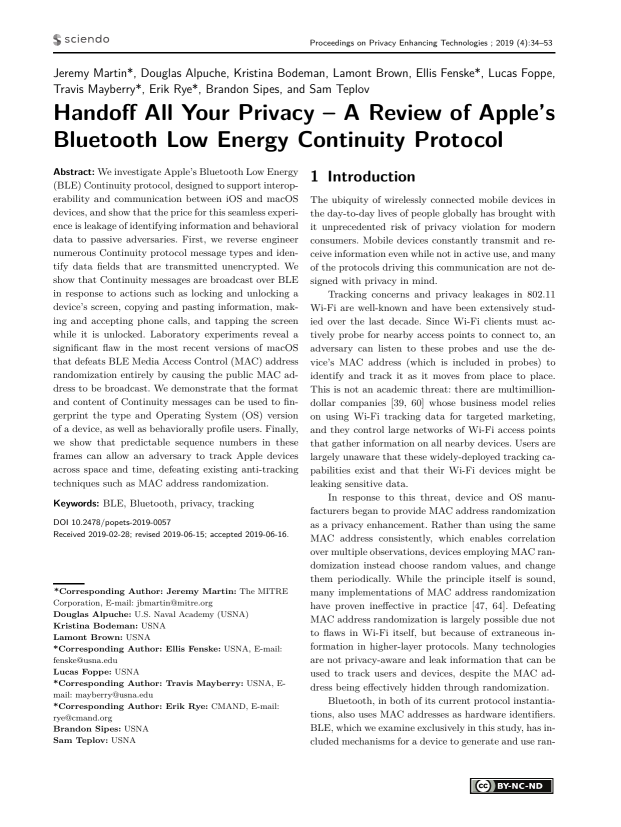Handoff All Your Privacy – A Review of Apple’s Bluetooth Low Energy Continuity Protocol
Authors: Jeremy Martin (The MITRE Corporation), Douglas Alpuche (U.S. Naval Academy (USNA)), Kristina Bodeman (USNA), Lamont Brown (USNA), Ellis Fenske (USNA), Lucas Foppe (USNA), Travis Mayberry (USNA), Erik Rye (CMAND), Brandon Sipes (USNA), Sam Teplov (USNA)
Volume: 2019
Issue: 4
Pages: 34–53
DOI: https://doi.org/10.2478/popets-2019-0057
Abstract: We investigate Apple’s Bluetooth Low Energy (BLE) Continuity protocol, designed to support interoperability and communication between iOS and macOS devices, and show that the price for this seamless experience is leakage of identifying information and behavioral data to passive adversaries. First, we reverse engineer numerous Continuity protocol message types and identify data fields that are transmitted unencrypted. We show that Continuity messages are broadcast over BLE in response to actions such as locking and unlocking a device’s screen, copying and pasting information, making and accepting phone calls, and tapping the screen while it is unlocked. Laboratory experiments reveal a significant flaw in the most recent versions of macOS that defeats BLE Media Access Control (MAC) address randomization entirely by causing the public MAC address to be broadcast. We demonstrate that the format and content of Continuity messages can be used to fingerprint the type and Operating System (OS) version of a device, as well as behaviorally profile users. Finally, we show that predictable sequence numbers in these frames can allow an adversary to track Apple devices across space and time, defeating existing anti-tracking techniques such as MAC address randomization.
Keywords: BLE, Bluetooth, privacy, tracking
Copyright in PoPETs articles are held by their authors. This article is published under a Creative Commons Attribution-NonCommercial-NoDerivs 3.0 license.

